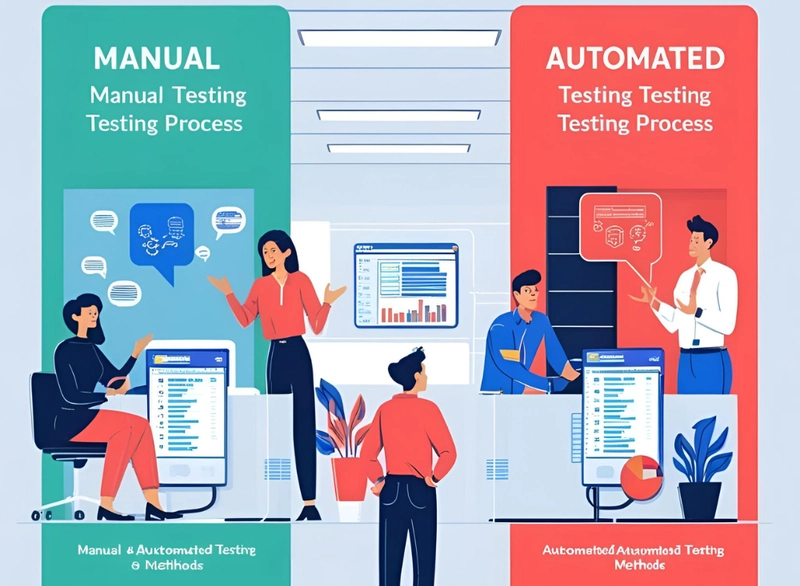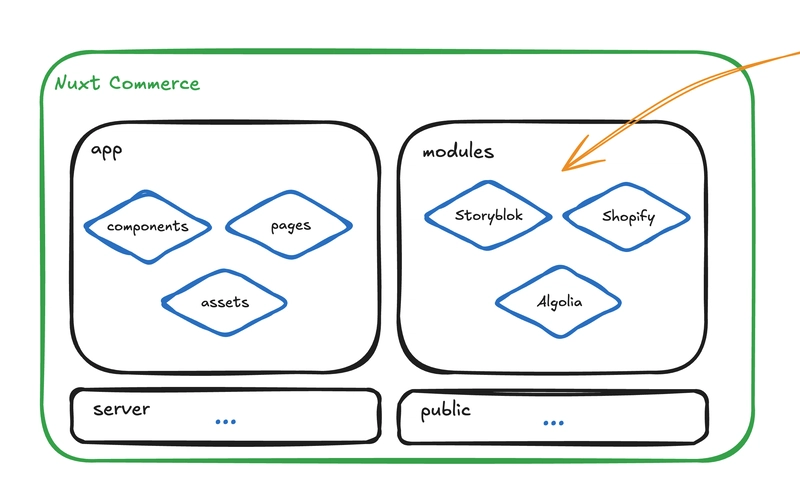Testing Basics: How Do You Prioritize Manual vs Automated Testing?
In the world of software development, testing is a critical process that ensures the quality, functionality, and reliability of applications. Two primary approaches to testing are manual testing and automated testing. While both are essential, they serve different purposes and are suited for different scenarios. Deciding when to use manual testing versus automated testing can significantly impact the efficiency and effectiveness of your testing process. This article explores the key differences between manual and automated testing, factors to consider when prioritizing them, and how to strike the right balance for your project. What is Manual Testing? Manual testing involves human testers executing test cases without the use of automation tools. Testers manually interact with the application, simulate user actions, and verify the expected outcomes. This approach is ideal for exploratory testing, usability testing, and scenarios where human judgment is required. Key Characteristics of Manual Testing Human-Centric: Relies on human intuition, creativity, and judgment. Flexible: Adaptable to changes in requirements or unexpected scenarios. Time-Consuming: Requires significant time and effort, especially for repetitive tasks. What is Automated Testing? Automated testing involves using scripts and tools to execute test cases automatically. It is ideal for repetitive tasks, regression testing, and scenarios where speed and consistency are critical. Automated testing can save time and resources, especially for large-scale projects. Key Characteristics of Automated Testing Tool-Centric: Relies on scripts and tools to execute tests. Efficient: Ideal for repetitive tasks and large-scale testing. Initial Setup Cost: Requires time and resources to develop and maintain test scripts. Factors to Consider When Prioritizing Manual vs Automated Testing To determine the right balance between manual and automated testing, consider the following factors: 1. Budget and Strategy Manual Testing: Requires less upfront investment but can be costly in the long run due to the time and effort involved. Automated Testing: Requires a higher initial investment in tools and script development but can save costs over time for repetitive tasks. 2. The Depth and Breadth of Your Tests Manual Testing: Ideal for exploratory testing, usability testing, and scenarios requiring human judgment. Automated Testing: Best for regression testing, load testing, and scenarios requiring repeated execution. 3. You Can Do Some Things Only Manually Certain tests, such as usability testing, ad-hoc testing, and exploratory testing, require human intuition and creativity. These tests are difficult or impossible to automate effectively. 4. Some Tests Typically Need to Be Run Many Times Repetitive tests, such as regression testing or smoke testing, are ideal for automation. Automated testing ensures consistency and saves time for these tasks. 5. Some Tests Are Very Fast to Run and Are Difficult to Automate Cost-Effectively Simple tests that take minimal time to execute manually may not justify the cost of automation. In such cases, manual testing is more practical. 6. Using Automation Helps You Create an Audit Trail of Executed Tests Automated testing provides a clear record of executed tests, making it easier to track results, identify issues, and ensure compliance with testing standards. When to Use Manual Testing Exploratory Testing: When you need to explore the application and identify unexpected issues. Usability Testing: When evaluating the user experience and interface design. Ad-Hoc Testing: When testing without a predefined plan to uncover hidden defects. Short-Term Projects: When the cost of automation outweighs the benefits. When to Use Automated Testing Regression Testing: When you need to ensure that new changes do not break existing functionality. Load Testing: When testing the application’s performance under heavy user loads. Repetitive Tasks: When executing the same tests multiple times. Long-Term Projects: When the initial investment in automation can be justified by long-term savings. Striking the Right Balance The key to effective testing is finding the right balance between manual and automated testing. Here are some tips: Combine Both Approaches: Use manual testing for exploratory and usability testing, and automated testing for repetitive and regression testing. Evaluate Your Needs: Assess your project’s requirements, budget, and timeline to determine the best approach. Prioritize Critical Areas: Focus automation efforts on critical areas that require frequent testing. Continuously Improve: Regularly review and refine your testing strategy to optimize efficiency and effectiveness. Conclusion Manual testing and automated testing are both essential components of a comprehensive testing strategy. While manual testing excels in scenarios requiring human judgment and creativity, automated testing is ideal for repetitive tasks and large-scale

In the world of software development, testing is a critical process that ensures the quality, functionality, and reliability of applications. Two primary approaches to testing are manual testing and automated testing. While both are essential, they serve different purposes and are suited for different scenarios. Deciding when to use manual testing versus automated testing can significantly impact the efficiency and effectiveness of your testing process. This article explores the key differences between manual and automated testing, factors to consider when prioritizing them, and how to strike the right balance for your project.
What is Manual Testing?
Manual testing involves human testers executing test cases without the use of automation tools. Testers manually interact with the application, simulate user actions, and verify the expected outcomes. This approach is ideal for exploratory testing, usability testing, and scenarios where human judgment is required.
Key Characteristics of Manual Testing
Human-Centric: Relies on human intuition, creativity, and judgment.
Flexible: Adaptable to changes in requirements or unexpected scenarios.
Time-Consuming: Requires significant time and effort, especially for repetitive tasks.
What is Automated Testing?
Automated testing involves using scripts and tools to execute test cases automatically. It is ideal for repetitive tasks, regression testing, and scenarios where speed and consistency are critical. Automated testing can save time and resources, especially for large-scale projects.
Key Characteristics of Automated Testing
Tool-Centric: Relies on scripts and tools to execute tests.
Efficient: Ideal for repetitive tasks and large-scale testing.
Initial Setup Cost: Requires time and resources to develop and maintain test scripts.
Factors to Consider When Prioritizing Manual vs Automated Testing
To determine the right balance between manual and automated testing, consider the following factors:
1. Budget and Strategy
Manual Testing: Requires less upfront investment but can be costly in the long run due to the time and effort involved.
Automated Testing: Requires a higher initial investment in tools and script development but can save costs over time for repetitive tasks.
2. The Depth and Breadth of Your Tests
Manual Testing: Ideal for exploratory testing, usability testing, and scenarios requiring human judgment.
Automated Testing: Best for regression testing, load testing, and scenarios requiring repeated execution.
3. You Can Do Some Things Only Manually
Certain tests, such as usability testing, ad-hoc testing, and exploratory testing, require human intuition and creativity. These tests are difficult or impossible to automate effectively.
4. Some Tests Typically Need to Be Run Many Times
Repetitive tests, such as regression testing or smoke testing, are ideal for automation. Automated testing ensures consistency and saves time for these tasks.
5. Some Tests Are Very Fast to Run and Are Difficult to Automate Cost-Effectively
Simple tests that take minimal time to execute manually may not justify the cost of automation. In such cases, manual testing is more practical.
6. Using Automation Helps You Create an Audit Trail of Executed Tests
Automated testing provides a clear record of executed tests, making it easier to track results, identify issues, and ensure compliance with testing standards.
When to Use Manual Testing
Exploratory Testing: When you need to explore the application and identify unexpected issues.
Usability Testing: When evaluating the user experience and interface design.
Ad-Hoc Testing: When testing without a predefined plan to uncover hidden defects.
Short-Term Projects: When the cost of automation outweighs the benefits.
When to Use Automated Testing
Regression Testing: When you need to ensure that new changes do not break existing functionality.
Load Testing: When testing the application’s performance under heavy user loads.
Repetitive Tasks: When executing the same tests multiple times.
Long-Term Projects: When the initial investment in automation can be justified by long-term savings.
Striking the Right Balance
The key to effective testing is finding the right balance between manual and automated testing. Here are some tips:
Combine Both Approaches: Use manual testing for exploratory and usability testing, and automated testing for repetitive and regression testing.
Evaluate Your Needs: Assess your project’s requirements, budget, and timeline to determine the best approach.
Prioritize Critical Areas: Focus automation efforts on critical areas that require frequent testing.
Continuously Improve: Regularly review and refine your testing strategy to optimize efficiency and effectiveness.
Conclusion
Manual testing and automated testing are both essential components of a comprehensive testing strategy. While manual testing excels in scenarios requiring human judgment and creativity, automated testing is ideal for repetitive tasks and large-scale projects. By understanding the strengths and limitations of each approach, you can prioritize them effectively and strike the right balance for your project.
Remember, the goal of testing is to ensure the quality and reliability of your application. Whether you choose manual testing, automated testing, or a combination of both, the key is to align your testing strategy with your project’s needs and objectives. Start implementing these strategies today and take your testing efforts to the next level!









































































































































































![[The AI Show Episode 142]: ChatGPT’s New Image Generator, Studio Ghibli Craze and Backlash, Gemini 2.5, OpenAI Academy, 4o Updates, Vibe Marketing & xAI Acquires X](https://www.marketingaiinstitute.com/hubfs/ep%20142%20cover.png)































































































































![[DEALS] The Premium Learn to Code Certification Bundle (97% off) & Other Deals Up To 98% Off – Offers End Soon!](https://www.javacodegeeks.com/wp-content/uploads/2012/12/jcg-logo.jpg)

![From drop-out to software architect with Jason Lengstorf [Podcast #167]](https://cdn.hashnode.com/res/hashnode/image/upload/v1743796461357/f3d19cd7-e6f5-4d7c-8bfc-eb974bc8da68.png?#)








































































































.png?#)


































_Christophe_Coat_Alamy.jpg?#)



.webp?#)






































































































![Apple Considers Delaying Smart Home Hub Until 2026 [Gurman]](https://www.iclarified.com/images/news/96946/96946/96946-640.jpg)
![iPhone 17 Pro Won't Feature Two-Toned Back [Gurman]](https://www.iclarified.com/images/news/96944/96944/96944-640.jpg)
![Tariffs Threaten Apple's $999 iPhone Price Point in the U.S. [Gurman]](https://www.iclarified.com/images/news/96943/96943/96943-640.jpg)

































































































































